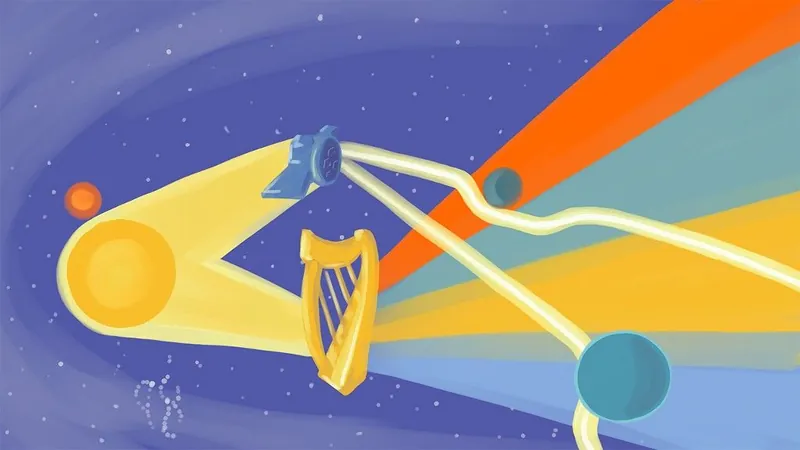
Unveiling the Mysteries of TOI-1453: Newly Discovered Exoplanets Challenge Our Solar System Understanding!
2025-03-27
Author: Jia
In an exciting breakthrough, astronomers have uncovered two newly discovered exoplanets named TOI-1453 b and TOI-1453 c, reigniting profound questions about the formation and composition of planetary systems, including our own. These fascinating worlds orbit a star dubbed TOI-1453, which lies approximately 250 light-years away in the Draco constellation. This star is part of a binary system, sharing its orbit with a companion star, a phenomenon that adds complexity to the development of its planets.
TOI-1453 b is classified as a super-Earth, slightly larger than our own planet, and is likely a rocky world. Its close orbit of just 4.3 days around TOI-1453 suggests extreme surface temperatures, potentially stripping away any significant atmosphere it might have had. This discovery raises intriguing parallels with Mercury, the closest planet to our own sun, which also struggles with its atmospheric retention due to its scorching temperatures.
On the other hand, TOI-1453 c is characterized as a sub-Neptune, measuring about 2.2 times the size of Earth, yet possessing an unusually low mass of only 2.9 times that of Earth. This remarkable low density hints at an intriguing composition, possibly featuring a thick, hydrogen-rich atmosphere or being heavily dominated by water. Manu Stalport, an astrophysicist involved in the study, emphasizes that TOI-1453 c is an ideal candidate for future atmospheric investigations, with the potential to unravel secrets regarding planetary evolution.
The methods used to discover TOI-1453 b and c involved NASA’s Transiting Exoplanet Survey Satellite (TESS) which detects exoplanets by observing temporary dips in the host star’s brightness. This technique signals the passage of a planet across the star’s face, allowing astronomers to estimate the planet’s size and orbital period. Additionally, the High Accuracy Radial velocity Planet Searcher for the Northern hemisphere (HARPS-N) spectrograph was key in determining the gravitational influences acting on the stars in the binary system.
What makes these findings even more compelling is the observed orbital relationship between the two exoplanets. They exhibit a near 3:2 resonance: for every three orbits of TOI-1453 b, TOI-1453 c completes almost two. This relationship suggests that their orbits have been altered over time by gravitational interactions, not only from TOI-1453 but potentially from other cosmic bodies in the binary system.
The existence of TOI-1453 b and c poses a fascinating contrast to our solar system, where no super-Earths or sub-Neptunes have been identified. This discrepancy could challenge current theories of planetary formation and evolution. Astronomers are eager to leverage advanced instruments like the James Webb Space Telescope (JWST) to delve deeper into both exoplanets' atmospheres and compositions, hoping to uncover even more about their origins.
As investigations into TOI-1453 b and c unfold, the implications of this discovery could radically transform our understanding of planetary systems and lead to profound insights about the unique characteristics of our own solar system. Stay tuned, as the cosmos reveals its secrets!


 Brasil (PT)
Brasil (PT)
 Canada (EN)
Canada (EN)
 Chile (ES)
Chile (ES)
 Česko (CS)
Česko (CS)
 대한민국 (KO)
대한민국 (KO)
 España (ES)
España (ES)
 France (FR)
France (FR)
 Hong Kong (EN)
Hong Kong (EN)
 Italia (IT)
Italia (IT)
 日本 (JA)
日本 (JA)
 Magyarország (HU)
Magyarország (HU)
 Norge (NO)
Norge (NO)
 Polska (PL)
Polska (PL)
 Schweiz (DE)
Schweiz (DE)
 Singapore (EN)
Singapore (EN)
 Sverige (SV)
Sverige (SV)
 Suomi (FI)
Suomi (FI)
 Türkiye (TR)
Türkiye (TR)
 الإمارات العربية المتحدة (AR)
الإمارات العربية المتحدة (AR)